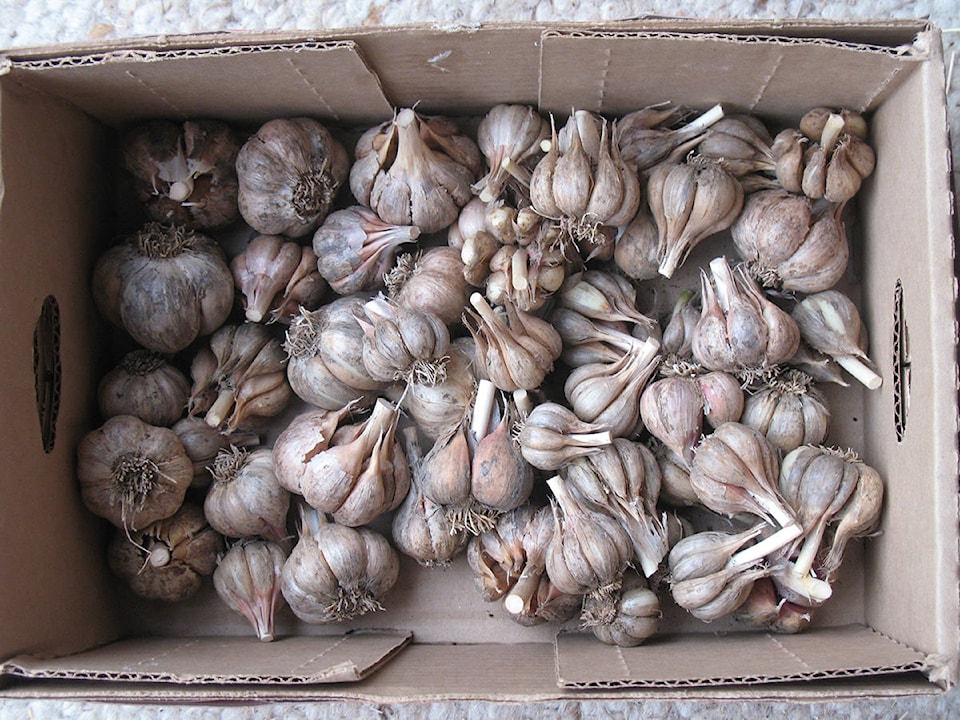By Mary Lowther
If I could grow only one crop it would be garlic, because it almost grows itself in our climate. A mild fall, cold winter, spring rain and a dry summer produce great garlic that never needs watering. Insects, birds and vampires don’t come near the stuff and, although they grow in most soils, a well-balanced rich soil produces the tastiest bulbs.
I’ve always followed local advice and planted my garlic in October, but this year I’m going to try Helen Chestnut’s suggestion to plant some in late September. I’ll plant a third of the bed then, another third two weeks later and the last third two weeks after that and see how they fare next year.
I prepare my garlic bed the same way as all my other beds, making it easy to fit into the rotation plan, but if I were just starting out, here’s what I’d do:
Formula for Starting a New Bed
Ingredients: newspapers, compost, shredded leaves, organic fertilizer, clay (omit if your soil is mostly clay), winter rye and crimson clover seed (for cover crop)
Method:
1) In the fall, spread newspaper over future bed
2) Cover the newspaper with:
• ½ inch compost
• ½ inch of shredded leaves
• ¼ inch of clay if you have it (clay combines with compost to produce very stable humus)
• organic fertilizer at the rate of four quarts per hundred square feet
3) Sprinkle winter rye and crimson clover seed thinly over all and shallowly rake this under.
4) Protect the seeds from hungry birds. I use hoops covered with mesh and remove this once the cover crop is well established.
5) Next spring, dig this under and sow with a cover crop of buckwheat seed, watering as needed, digging this under before it goes to seed and then re-sowing with more buckwheat.
6) Two weeks before planting the garlic in the fall, dig the buckwheat in and leave it to rot.
7) When you’re ready to plant, hoe down the bed first to kill any interloping weeds and sprinkle organic fertilizer at the rate of four quarts per hundred square feet.
This method will produce a lovely, rich soil with a minimum of effort.
I’m going to plant my garlic cloves 10 inches apart instead of the recommended eight inches and, since they don’t need watering, they needn’t be in rows. Remember to separate the cloves and plant each one flat side down and pointy side up so they don’t expend extra energy righting themselves as they grow, and bury them about two inches deep. Keep them weeded and side dress with fertilizer when they send up more growth next spring.
Please contact mary_lowther@yahoo.ca with questions and suggestions since I need all the help I can get.
